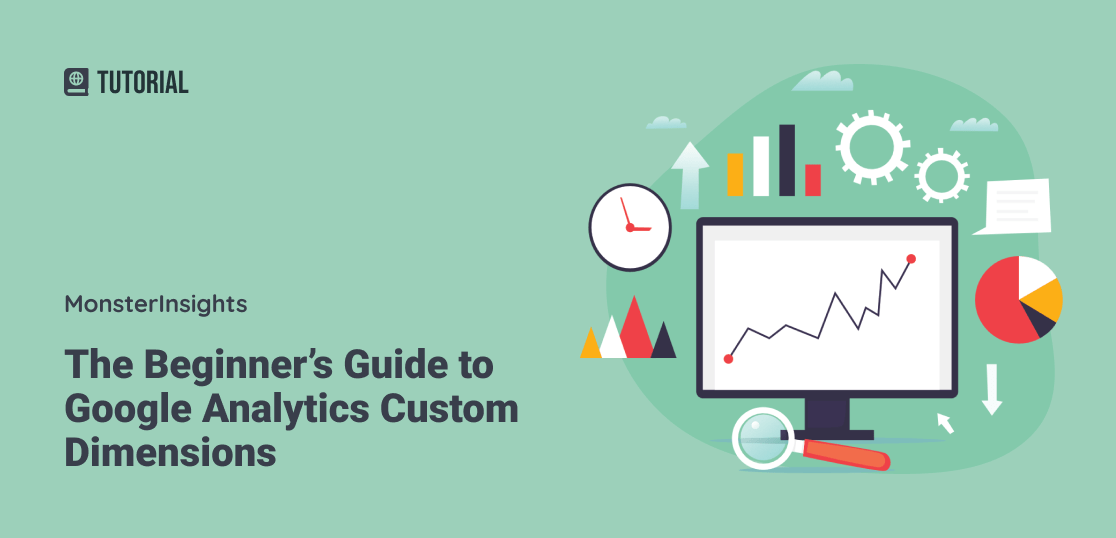Using the Power of Additional Measurement in Google Analytics to Refine Your Advertising Method and Drive Outcomes
Leveraging the power of additional dimensions within Google Analytics opens up a realm of opportunities for marketers seeking to get deeper understandings right into individual actions and customize their campaigns with precision. The possible to gauge project performance with a granular lens additionally highlights the significance of harnessing this device to drive success.
Comprehending Second Measurements
When analyzing information in Google Analytics, comprehending additional measurements is important for acquiring much deeper understandings right into individual behavior and website efficiency. Primary measurements give fundamental information such as the number of sessions or customers, yet secondary measurements offer an even more detailed view by allowing users to segment and analyze data even more. By including a secondary measurement, marketing professionals can improve their analysis and discover valuable patterns that might have or else gone unnoticed.
Second dimensions in Google Analytics can be used to various metrics such as website traffic sources, customer demographics, and behavior circulation. By incorporating the primary dimension of 'touchdown pages' with the additional measurement of 'device classification,' marketers can identify which devices are driving website traffic to specific landing web pages (what is a secondary dimension in google analytics). This information can assist maximize website style and web content for much better individual experience throughout different gadgets
Studying Individual Actions Patterns
To properly recognize individual actions patterns, an extensive analysis of information within Google Analytics is important. By delving right into user habits patterns, marketing experts can acquire important insights into how visitors communicate with their site, which pages are most engaging, and where potential traffic jams or drop-off factors might exist in the conversion channel. Google Analytics uses a variety of devices to examine individual habits, such as behavior flow records, event tracking, and objective funnels.
Habits flow records supply an aesthetic representation of just how customers browse through the site, revealing the most typical paths users take as well as where they go down off. Occasion monitoring enables marketing professionals to keep an eye on specific interactions on the website, such as switch clicks or video clip sights, giving a much deeper understanding of user interaction. Goal funnels track the actions users take towards finishing a certain objective, highlighting locations for improvement in the conversion procedure.
Enhancing Target Market Segmentation
Upon analyzing customer habits patterns, marketing professionals can further optimize their techniques by enhancing target market division techniques in Google Analytics. Target market segmentation enables for the classification of web site site visitors into specific groups based on various characteristics such as demographics, behavior, and rate of interests. By using Google Analytics' secondary measurements, marketing professionals can refine these sections even further to obtain much deeper insights into their target market's actions and choices.
Enhancing audience division allows marketing experts to develop even more targeted and personalized advertising campaigns. By determining distinct user teams, marketing professionals can tailor their messaging, material, and offers to far better resonate with each segment's distinct qualities and demands. This level of customization can substantially enhance interaction, conversion prices, and general advertising and marketing efficiency.
Furthermore, with improved target market segmentation, marketing professionals can much better comprehend the consumer trip and maximize touchpoints along the path to conversion. By analyzing just how various sections connect with Going Here the internet site and advertising networks, marketing experts can determine possibilities to enhance customer experience, address discomfort points, and inevitably drive more conversions. In general, refining audience segmentation in Google Analytics is an effective method for maximizing advertising efficiency and driving sustainable organization development.
Tailoring Advertising And Marketing Campaigns
Marketing professionals can maximize their marketing campaigns by tailoring content and messaging to fit the special attributes and needs of particular audience sectors. Customizing advertising projects entails developing tailored experiences that resonate with various teams of consumers. By leveraging understandings from additional measurements in Google Analytics, marketers can obtain a deeper understanding of their audience's actions, choices, and demographics. This data allows for the production of targeted projects that speak straight to the rate of interests and discomfort factors of particular sectors, boosting the possibility of engagement and conversion.
Through the evaluation of additional measurements such as website traffic sources, devices utilized, or geographic place, marketing experts can adjust their messaging to be much more impactful and relevant. For instance, an e-commerce business might uncover through Google Analytics that visitors from social media sites channels have a higher conversion price than those from natural search. Equipped with this knowledge, the business can readjust its advertising and marketing strategy to focus a lot more on social media sites systems to drive better results. By customizing advertising and marketing projects based upon insights from additional measurements, organizations can make the most of the efficiency of their initiatives and eventually drive far better ROI.
Measuring Project Performance

One vital element of determining campaign performance is tracking conversions. By establishing objectives in Google Analytics, businesses can monitor particular activities taken by customers as a result of the project, such as making a purchase or authorizing up for an e-newsletter. Recognizing the conversion price and the conversion path can offer useful understandings into the effectiveness of different advertising networks and messages.
Additionally, analyzing metrics such as click-through prices, bounce prices, and session period can help marketing experts examine individual interaction and the influence of the project on web site traffic. By incorporating main metrics with additional measurements in Google Analytics, businesses can improve their marketing approaches, maximize campaign efficiency, and drive far better results.
Conclusion
In verdict, harnessing the power of second dimensions in Google Analytics can give important insights right into user habits patterns, improve audience division, dressmaker marketing campaigns, and measure campaign effectiveness. By using this feature successfully, companies can fine-tune their advertising and marketing approaches and drive far better results. It is critical for marketers to utilize the data offered with secondary measurements to make enlightened choices and optimize their advocate maximum impact.
